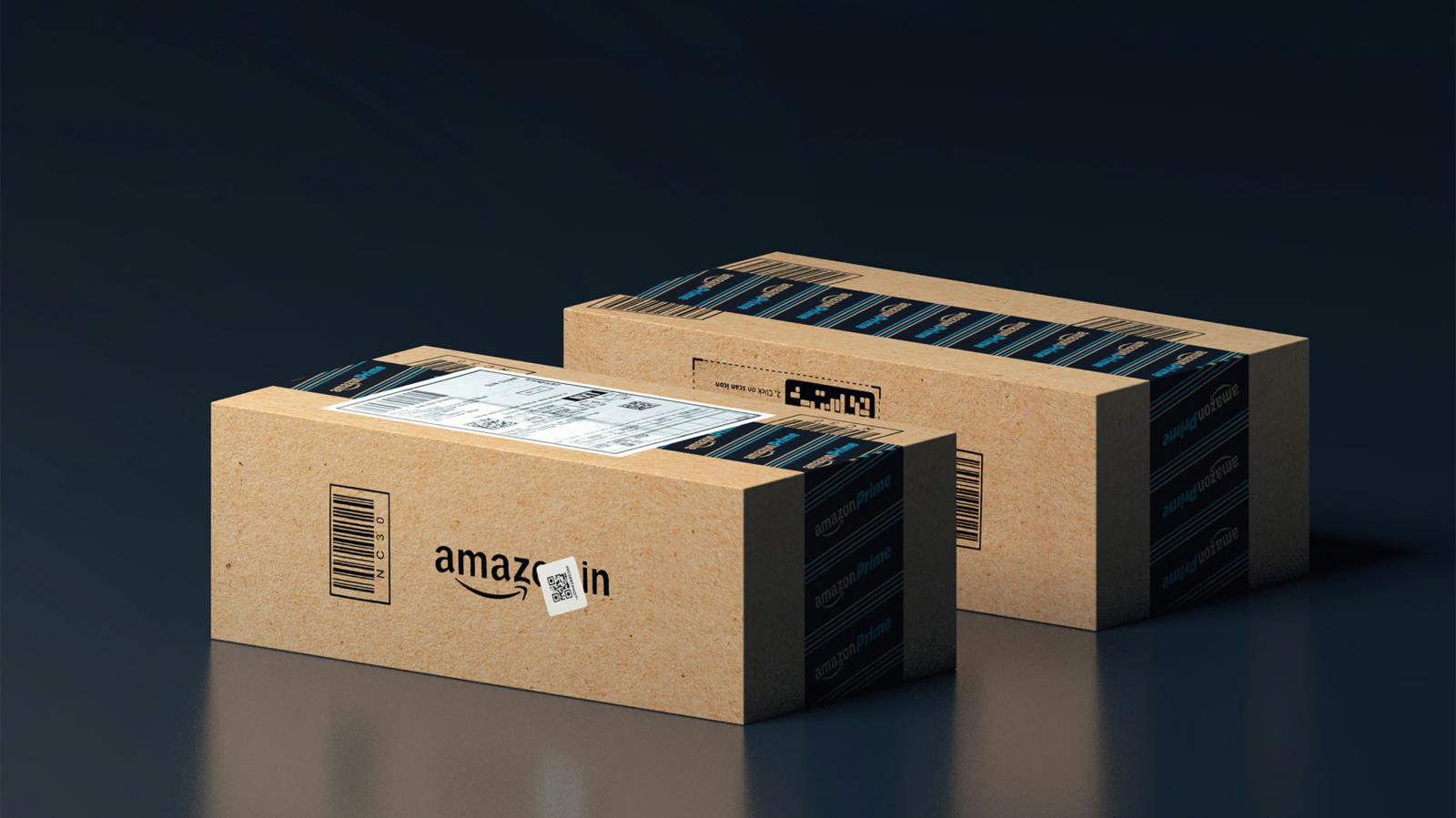Key Points
- The Amazon Prime Visa earns 5% back on Prime Day purchases, making it the top choice for Prime members.
- Chase Freedom cards can earn 5% on Amazon during Q4 if it's the rotating category.
- Using Prime Day to hit a new credit card welcome bonus multiplies your value significantly.
Introduction
Amazon Prime Day in October 2025 brings thousands of deals on travel gear, electronics, and everyday purchases. But here's what most shoppers miss: the payment method you choose matters as much as the deals themselves. The right credit card can add an extra 5% back on top of already discounted prices, or help you knock out a $6,000 minimum spend requirement in one strategic shopping session. Let me show you exactly which cards to use for maximum value during this Prime Day event.
The Best Payment Strategy for Prime Day 2025
Top Choice: Amazon Prime Visa (5% Back)
If you're a Prime member, the Amazon Prime Visa is your best friend during Prime Day. You'll earn 5% back on every purchase, which stacks beautifully with sale prices. Here's the math: a $500 travel backpack marked down to $350 nets you $17.50 back, plus you saved $150 from the sale. That's real money you can use toward your next trip.
The card also earns 5% at Whole Foods and 2% at gas stations and restaurants, making it useful year-round. There's no annual fee beyond your Prime membership, and you can redeem rewards as statement credits with no minimum.
Strategic Alternative: Chase Freedom Flex or Freedom Unlimited
The Chase Freedom Flex and Chase Freedom Unlimited both earn 5% on travel booked through Chase Ultimate Rewards. But during Q4 (October through December), the Freedom Flex often features Amazon as a 5% rotating category.
If Amazon is a Q4 category for 2025, you'll earn 5% back on up to $1,500 in purchases per quarter. That's $75 in cash back potential. The real power move? These points transfer to airline partners if you pair them with a Chase Sapphire Preferred or Reserve. Suddenly, your Prime Day shopping is funding award flights.
The Welcome Bonus Strategy
Prime Day creates a perfect opportunity to meet minimum spend requirements on new credit cards. Let's say you just got approved for the Chase Sapphire Preferred, which requires $4,000 in spending within three months for a 60,000-point bonus.
If you were already planning $2,000 in Prime Day purchases, you're halfway to that bonus without any manufactured spending. Those 60,000 Chase points are worth $750 when transferred to airline partners, or $600 through the Chase travel portal. That's a better return than any Prime Day discount.
Which Products Should You Buy on Prime Day?
The best Prime Day deals typically fall into these categories, and they align perfectly with travel needs:
Travel Gear and Luggage
Prime Day consistently delivers 30-50% discounts on luggage brands like Samsonite, away-style hardside cases, and travel backpacks. These aren't impulse purchases, they're investments in future trips. Condé Nast Traveler tracks the specific deals worth watching.
Use your 5% back card here. A $400 carry-on at 40% off costs $240, and 5% back saves you another $12. You need luggage anyway, so timing the purchase to Prime Day while using the right card maximizes value.
Electronics and Travel Tech
Noise-canceling headphones, portable chargers, and e-readers see significant discounts. These items make long flights bearable and often pay for themselves in improved travel comfort. The key is buying what you actually need rather than getting seduced by a discount on something you'll never use.
Gift Cards Strategy
Here's an advanced move: Amazon occasionally offers promotional credits when you buy certain gift cards during Prime Day. If you see a "spend $50 on Airbnb gift cards, get $10 Amazon credit" deal, that's a 20% return before considering your credit card rewards.
Stack that with 5% back from your Amazon Prime Visa, and you're effectively getting 25% off future Airbnb stays. This is strategic spending that compounds value.
How to Stack Multiple Discounts
The Complete Strategy
Maximum value comes from layering multiple savings mechanisms:
Layer 1: Prime Day Sale Price
Start with the discount Amazon is already offering, typically 20-50% on featured items.
Layer 2: Credit Card Rewards
Add 5% back from your Amazon Prime Visa or eligible Chase Freedom card.
Layer 3: Welcome Bonus Progress
If these purchases help you hit a minimum spend requirement, factor in that value. A 60,000-point bonus worth $600-750 spread across $4,000 in spending equals an extra 15-19% return.
Layer 4: Promotional Credits
Watch for special Prime Day promos like "spend $50, get $10 credit" on specific categories.
Cards to Avoid Using on Prime Day
Not every card makes sense for Amazon purchases. Here's what to skip:
Category Bonus Cards Without Amazon
Cards like the American Express Gold earn 4x points at restaurants and supermarkets, but only 1x point per dollar at Amazon. You're leaving money on the table if you use a 1x card when you have access to 5% back.
High-APR Cards If You Can't Pay Immediately
Prime Day deals aren't deals if you're paying 22% interest on the purchase. Only use credit cards for Prime Day shopping if you can pay the balance in full when the statement arrives. The 5% back gets obliterated by even one month of interest charges.
Timing Your Prime Day Strategy
Before Prime Day
Two weeks before October Prime Day, check if you're approaching any minimum spend deadlines on new cards. If you're $2,000 short of a welcome bonus with one month left, Prime Day could be your solution.
Also verify whether Amazon is a 5% category for your Chase Freedom Flex. You'll need to activate the category each quarter, which takes 30 seconds in the Chase app.
During Prime Day
Lightning deals come and go quickly, but don't let FOMO make you buy things you don't need. Stick to your list of items you were already planning to purchase. The best use of Prime Day is accelerating purchases you'd make anyway while maximizing rewards.
After Prime Day
Track when your rewards post. Amazon Prime Visa cash back appears within 1-2 billing cycles. Chase points post when your statement closes. If you were using Prime Day to hit a welcome bonus, verify the points arrived as expected.
The Numbers That Actually Matter
Let's look at a realistic Prime Day scenario with actual dollar amounts:
Planned Purchases:
- Luggage: $400 (40% off) = $240
- Noise-canceling headphones: $350 (30% off) = $245
- Portable charger: $60 (25% off) = $45
- Travel backpack: $150 (35% off) = $97.50
Total spent: $627.50
Using Amazon Prime Visa (5% back):
- Immediate cash back: $31.38
- Sale savings: $372.50
- Total value captured: $403.88
Using for Welcome Bonus:
If this spending helps you hit a Chase Sapphire Preferred bonus:
- Direct value: $627.50 in purchases
- Progress toward: 60,000 points ($600-750 value)
- Effective return: 15-20% on top of sale prices
These numbers show why payment strategy matters as much as deal hunting.
Common Mistakes to Avoid
Buying Things You Don't Need
A 50% discount on something you won't use is still money wasted. Prime Day should accelerate purchases you were already planning, not create new spending categories.
Forgetting to Activate Rotating Categories
Chase Freedom Flex requires quarterly activation for 5% categories. If you forget to activate and Amazon is included, you'll only earn 1% instead of 5%. Set a calendar reminder for October 1st.
Missing the Welcome Bonus Deadline
If you're using Prime Day to help hit minimum spend, verify the purchase will post before your deadline. Amazon charges when items ship, not when you place the order. A backorder could mean the charge posts too late.
FAQ
Can I use multiple credit cards for one Prime Day order?
No, Amazon requires one payment method per order. However, you can place multiple orders using different cards. This actually works in your favor if you're strategically hitting multiple welcome bonuses or want to use different cards for different categories.
Do Prime Day purchases count toward credit card categories?
Yes, Amazon purchases code as "online retail" and qualify for category bonuses on cards that offer them. The Chase Freedom Flex treats Amazon as eligible for the 5% rotating category when active. The Amazon Prime Visa always gives 5% on Amazon purchases for Prime members.
Should I use Prime Day to hit minimum spend on a new business card?
Absolutely, if you're a legitimate business owner or sole proprietor. Many people don't realize that business cards can be used for any purchase, not just business expenses. A Chase Ink Business Preferred welcome bonus of 100,000 points is worth $1,000-1,250, making Prime Day an efficient way to hit the spending requirement.
What if I need to return something I bought on Prime Day?
Returns are processed normally, and your credit card rewards will be reversed when the refund posts. This is actually protection against buying something just for the discount. If it doesn't work out, you're not stuck with an unnecessary purchase.
Conclusion
Amazon Prime Day in October 2025 offers legitimate savings on travel gear and everyday purchases, but the real value comes from combining sale prices with strategic credit card use. The Amazon Prime Visa delivers consistent 5% back for Prime members, while Chase Freedom cards offer flexibility if Amazon is a Q4 rotating category. The smartest approach? Use Prime Day to make purchases you already planned while hitting welcome bonus spending requirements on new cards. That combination of discounted prices, category bonuses, and welcome bonus progress creates value that extends far beyond the two-day sale event.
This article contains affiliate links. If you apply through our links, we may earn a commission at no cost to you, which helps us continue sharing points and miles strategies with the community.















